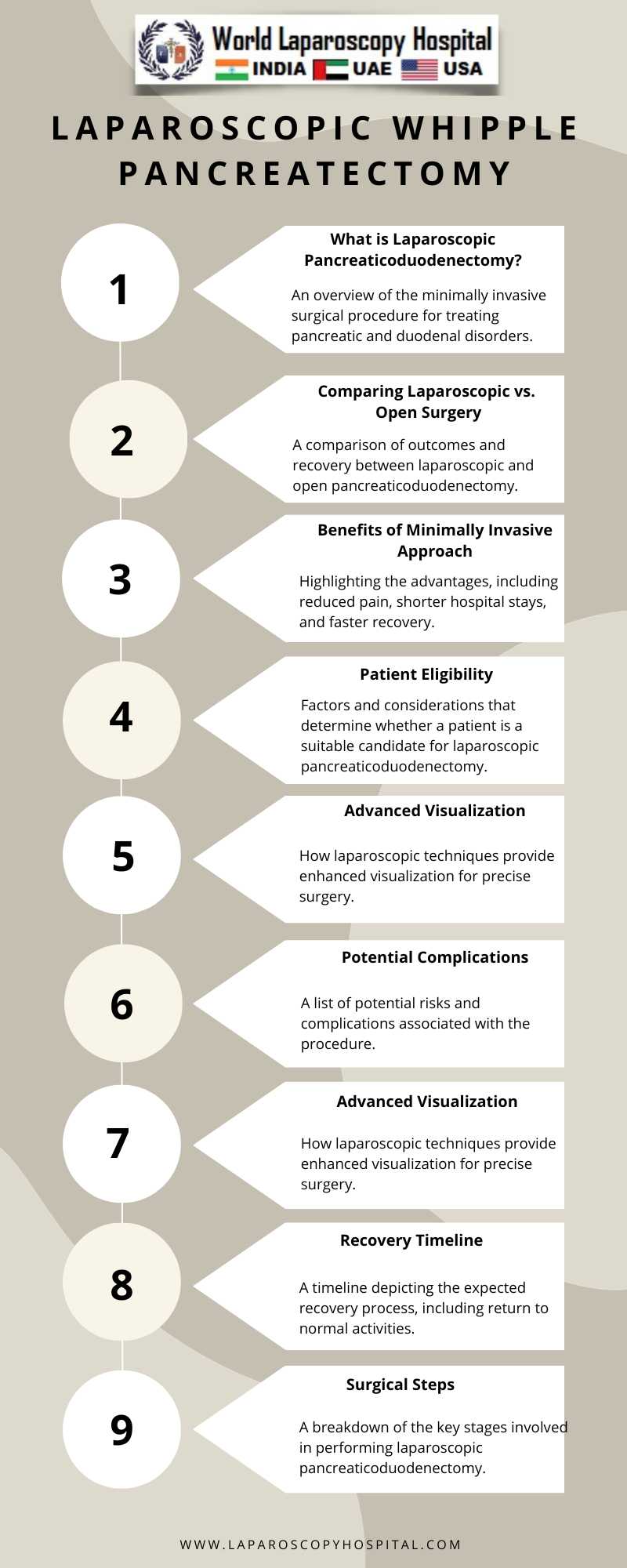Introduction:
Pancreatic disorders, including pancreatic cancer and certain chronic conditions, have long presented a significant challenge to the medical community. The Whipple procedure, also known as pancreaticoduodenectomy, is a complex surgery often employed to treat such conditions. Traditionally performed as an open surgery, it has been associated with prolonged hospital stays and a slow recovery process. However, advancements in surgical techniques have led to the development of the laparoscopic Whipple pancreatectomy, a minimally invasive approach that offers the potential to enhance patient recovery and outcomes. In this article, we will explore the laparoscopic Whipple procedure, its benefits, and its impact on patient recovery.

Understanding the Whipple Procedure
The Whipple procedure is a surgical operation primarily used to treat disorders of the pancreas, bile duct, and the first part of the small intestine (duodenum). It involves the removal of the head of the pancreas, the duodenum, a portion of the common bile duct, and sometimes a portion of the stomach. This surgery is commonly performed to treat pancreatic cancer, chronic pancreatitis, and certain benign tumors.
Traditionally, the Whipple procedure has been performed as an open surgery, which requires a large abdominal incision. While it is effective in treating the underlying conditions, the recovery process for patients undergoing open Whipple surgery can be challenging. Patients often experience significant postoperative pain, an extended hospital stay, and a slow return to normal activities.
Enter the Laparoscopic Whipple Procedure
The laparoscopic Whipple procedure represents a significant advancement in surgical techniques. Also known as minimally invasive surgery, it involves making several small incisions in the abdomen through which specialized instruments and a camera (laparoscope) are inserted. These instruments allow the surgeon to perform the necessary resections and reconstructions with greater precision and minimal invasiveness.
Benefits of Laparoscopic Whipple Pancreatectomy
1. Reduced Postoperative Pain: One of the most noticeable advantages of the laparoscopic approach is reduced postoperative pain. Compared to the large incision of open surgery, the smaller incisions in laparoscopy result in less trauma to the abdominal muscles, leading to decreased pain and discomfort for the patient.
2. Shorter Hospital Stay: Patients undergoing laparoscopic Whipple surgery typically spend less time in the hospital compared to those who undergo open surgery. This shortened hospital stay not only reduces healthcare costs but also enhances the patient's overall experience and quality of life during recovery.
3. Quicker Return to Normal Activities: Minimally invasive surgery allows patients to recover faster and return to their regular activities sooner. This is especially important for those who need to resume their daily routines, including work and family responsibilities.
4. Reduced Risk of Complications: While all surgeries come with inherent risks, laparoscopic procedures generally carry a lower risk of certain complications such as wound infections and hernias due to smaller incisions and reduced tissue trauma.
5. Improved Cosmetic Outcome: The smaller incisions in laparoscopic surgery result in less noticeable scars, which can be an important consideration for patients concerned about their cosmetic appearance.
6. Enhanced Visualization: The laparoscope provides surgeons with high-definition, magnified views of the surgical site. This enhanced visualization enables precise and meticulous dissection, reducing the risk of damage to nearby structures and improving surgical outcomes.
Challenges and Considerations
While the laparoscopic Whipple procedure offers many advantages, it is essential to acknowledge that it is a technically demanding surgery. Surgeons must undergo specialized training to perform this procedure safely and effectively. Additionally, not all patients may be suitable candidates for laparoscopic pancreatectomy, as the decision depends on various factors, including the patient's overall health, the extent of the disease, and the surgeon's expertise.
Conclusion
The laparoscopic Whipple pancreatectomy represents a significant step forward in the field of pancreatic surgery. Its minimally invasive approach offers several benefits, including reduced postoperative pain, shorter hospital stays, quicker recovery, and improved cosmetic outcomes. However, it is crucial to recognize that this procedure requires a high level of surgical skill and is not suitable for all patients.
As surgical techniques continue to advance and more surgeons gain expertise in laparoscopic pancreatectomy, it is likely that its benefits will become increasingly accessible to a broader range of patients. The laparoscopic Whipple procedure holds promise for enhancing patient recovery and improving the overall experience for those facing pancreatic disorders, offering hope for a brighter future in the field of pancreatic surgery.